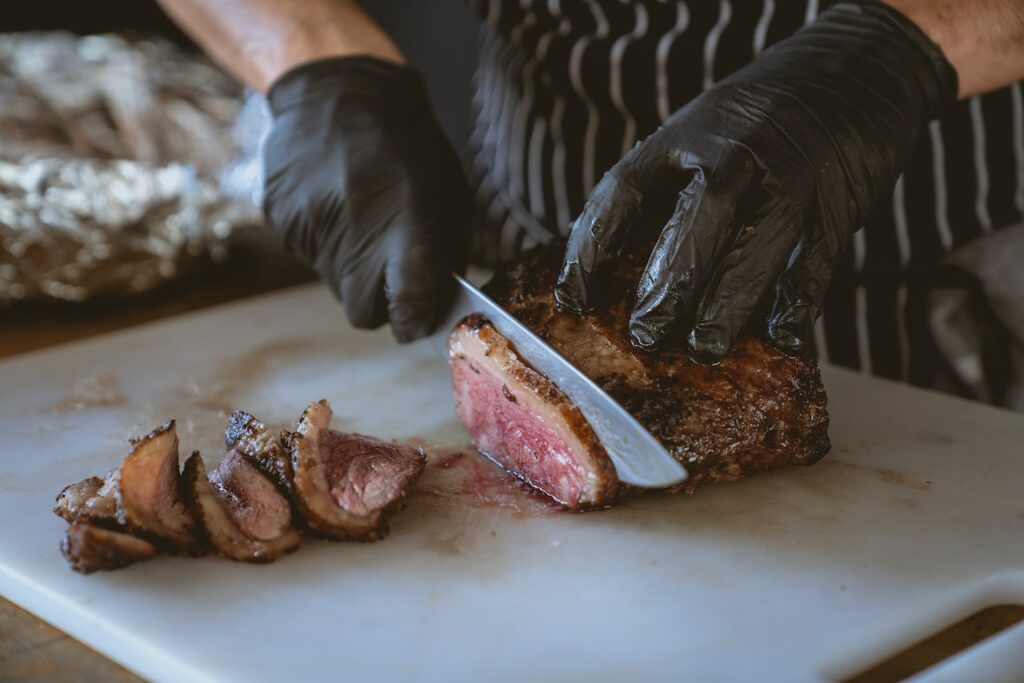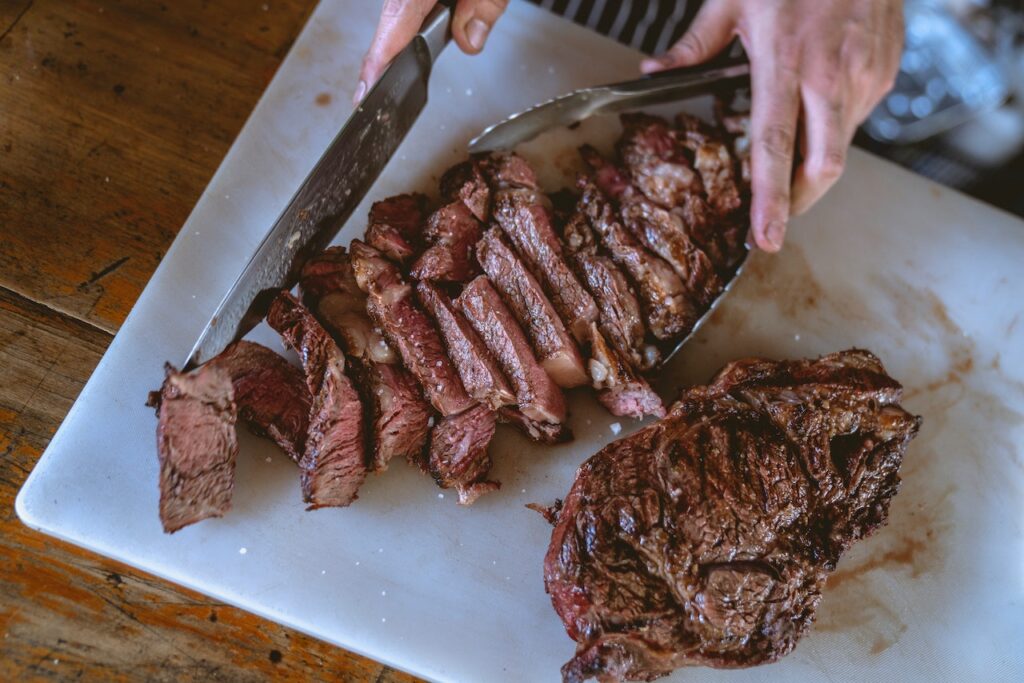As an Amazon Associate we earn from qualifying purchases.
There are several options to cook my favorite meals and enjoy the outcome. These methods can range from baking, frying, grilling, and many more. If you want to know which method of cooking is better between, a sous vide or slow cooker read all about them and compare them to decide the right one for you.
Quick Navigation
Sous Vide or Slow Cooker?
Sous vide is the method that involves cooking in a vacuum bag in a water bath with low temperatures. A slow cooker can have high heat and is an electrically closed cooking pot with constant temperatures to cook food.
However, a comparison of both these cooking devices can explain which one will be suitable for individual users. Moreover, are specific recipes and food items cooked better with each of these?

Overview of Sous Vide
Sous vide is a French cooking method and is used by professional chefs as well as home cooks. Nowadays, you can buy many kinds of setups to cook food in a water oven or create a setup for yourself at home. The basic concept involves cooking food in a vacuum sealed bag. This bag is submerged in warm water for hours.
The water temperature range for this cooking style is between 120⁰ Fahrenheit and 165⁰ Fahrenheit. The warm water surrounds the bag from all sides and ensures even and consistent cooking up to the center. Moreover, there are numerous health benefits of this style of cooking.
The various kinds of equipment that you will need to cook food in this style include:
- Immersion cooker
- Water oven
- Digital circulators
- Precision cookers to maintain the temperature of contents
- Vacuum sealer
- Resealable vacuum bags
Overview of Slow Cooker
A slow cooker is a countertop device that cooks food at a lower temperature and therefore requires a more extended period to complete cooking. This is best for gravies, vegetables, and recipes that involve soup or gravy because the food tends to stew, and the flavors incorporate well.
The temperature range for a cooker is between 170⁰ Fahrenheit and 280⁰ Fahrenheit. The average time taken to cook meats and other foods are between one and six hours. This range is for all foods; if you cook food longer, it might get overcooked and burn.
Comparing Sous Vide and Slow Cooker
A clear comparison between these two cooking styles will give all cooks an idea of the best cooking method. Even the most similar cooking techniques can give different results. You can compare the similarities and differences of results easily.
Similarities of the Cooking Styles
While most of us are used to conventional cooking, the French method of cooking in a vacuum bag and water oven or using a slow cooker has numerous benefits. The similar benefits of both these styles include:
- You can leave both of these setups unattended. There is no need to stir or attend the pot
- The cooking time spans hours
- They tenderize meat better than conventional cooking
- There is reduced heat generation and consumption due to low temperature cooking
Differences Between These Cooking Styles
While both methods of cooking are good choices for home cooks and professional chefs, it is essential to understand the differences between the two so that you can use the method that suits you at particular times.
- Slow cookers can overcook food if you leave them on for longer than prescribed
- Sous vide does not overcook, although leaving food in a vacuum bag in warm water might change the texture
- Sous vide temperature precision is higher, whereas cookers usually have low, medium, and high settings ranging between 170⁰ Fahrenheit and 280⁰ Fahrenheit
- Food left in a silicone sealed bag within a water bath will not lose any nutrients, whereas a slow cooking pot can squeeze out minerals and vitamins from food items

Major Distinguishing Factor
The major distinguishing factor between these two types of cooking setups is that while a slow cooker prepares food that is ready to serve, sous vide might need an additional step of assembling, searing, or basting. This prepares the meal that is ready to serve.
However, if you are using a vacuum bag to prepare vegetables or steaks, you may need gentle searing or basting to give the food a more desirable look. This is because the French method of cooking keeps meats and vegetables looking raw while they are cooked to the center.
When to Use Sous Vide?
You can resort to this sous vide cooking style when you have to prepare different kinds of steaks with individual seasonings or other foods at the same time. It also helps to cook foods that need to be served in separate portions and not a single dish. Professional cooks or home chefs cooking for a party can use this time-saving technique to create numerous portions with the same taste and texture.
When to Use a Slow Cooker?
These cookers can come in handy when you want to serve any food item within a few hours and need to prepare them without paying attention to the cooking pot. Adding all ingredients and setting the timer and temperature do the trick. You can use a slow cooking electric pot to make gravies, curries, stews, and even roasts that look ready, and do not need an extra step to complete the look and then serve.
Which Is Better, a Sous Vide or Slow Cooker?
Sous vide is better than a Crockpot because you can get all the nutrition naturally from the food item. Moreover, the texture will not be different every time, and you can create the same gourmet meal that is loved by all.
Additionally, since the temperature range of this French cooking technique is lower, your energy consumption will be less as well. The water bath allows cooks to prepare several meat, vegetable, or egg portions instead of one big dish.
Final Verdict
Sous vides or slow cookers can be great ways of preparing food. The health factor as well as the convenience of both these cooking setups vary and, therefore, give varying results. However, if you know the similarities and differences between the results and preparation steps, you can decide which one will be better for you.

